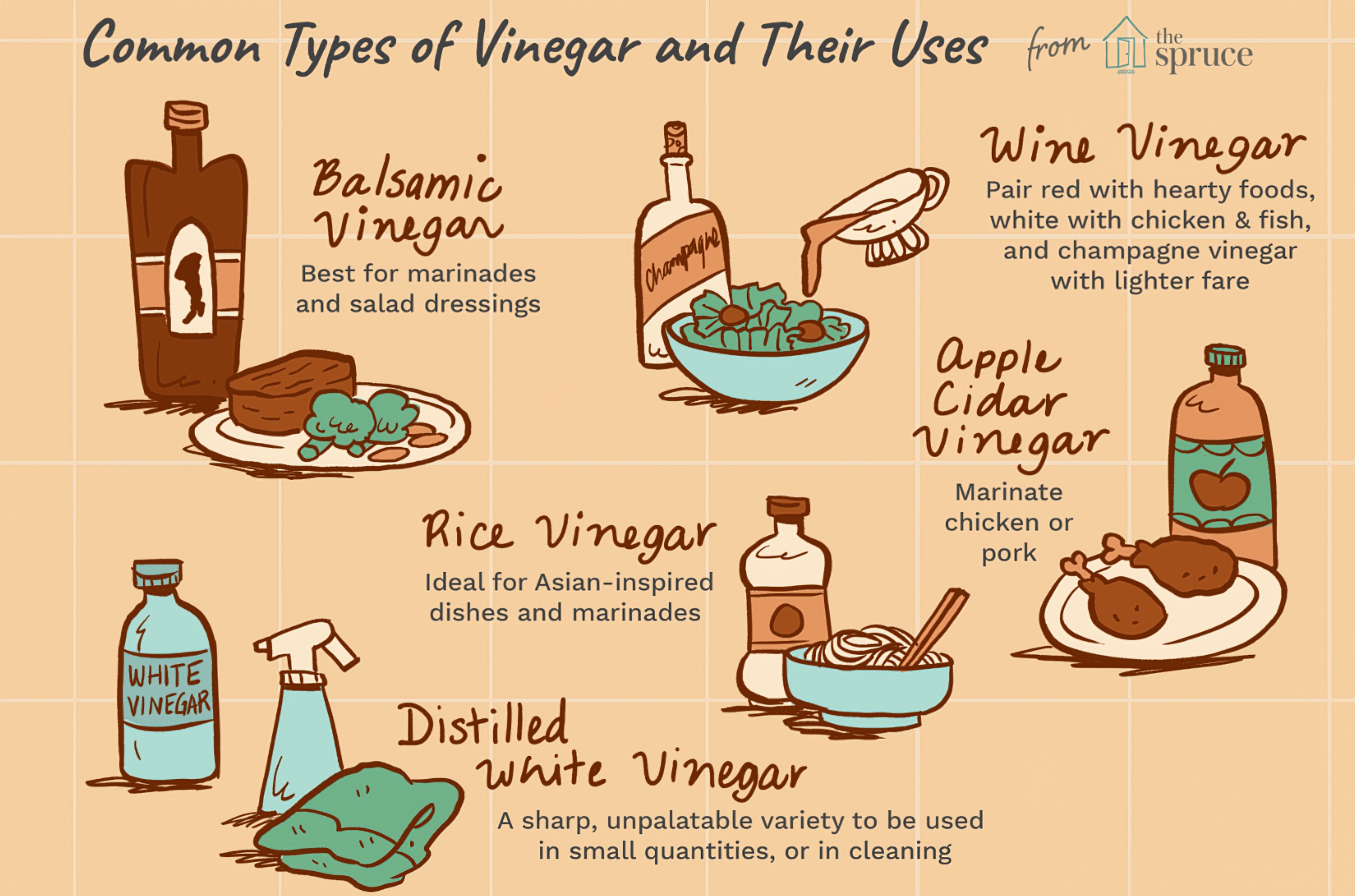Vinegar, the secret weapon of many chefs and home cooks, holds the power to uplift the flavor profiles of numerous dishes. The variety of vinegar types available today offers a palette of tastes, colors, and aromas that can enrich your cooking experience. Let’s dive into the world of vinegar, its different types, and how they can elevate your culinary creations.
- Different Types of Vinegar
- 1. Apple Cider Vinegar
- 2. Balsamic Vinegar
- 3. Red Wine Vinegar
- 4. White Wine Vinegar
- Tips on Cooking with Vinegar
- Balancing Acidity
- Vinegar in Marinades
- Adding Vinegar at the Right Time
- Using Vinegar in Baking
- Leavening
- Color
- Recipe Spotlight: Vinegar-based DressingФ
- Simple Dijon Vinaigrette
Different Types of Vinegar
1. Apple Cider Vinegar
Made from fermented apple juice, apple cider vinegar is mildly acidic with a fruity and tangy flavor. It’s perfect for salad dressings, marinades, or to add a touch of acidity to soups.
2. Balsamic Vinegar
Balsamic vinegar comes from the Modena region of Italy, known for its rich, slightly sweet flavor. It makes a great reduction for drizzling over grilled vegetables, strawberries, or even vanilla ice cream.
3. Red Wine Vinegar
With a robust flavor profile, red wine vinegar is perfect for hearty dishes like red meats or winter vegetables. Its strong flavor can withstand heat, making it an excellent choice for braising.
4. White Wine Vinegar
Light and slightly fruity, white wine vinegar is versatile in the kitchen. It is suitable for chicken, fish, and vegetable dishes and can give a subtle tanginess to delicate sauces.
Tips on Cooking with Vinegar
Balancing Acidity
Vinegar is all about acidity. To maximize its potential, balance it with sweet, salty, and umami flavors. For instance, a drizzle of balsamic vinegar can balance the richness of grilled steak.
Vinegar in Marinades
Vinegar in marinades serves two purposes: flavoring and tenderizing. The acidity breaks down the protein structures in the meat, resulting in a tender and flavorful dish.
Adding Vinegar at the Right Time
The point at which you add vinegar to your dish can make a significant difference. Generally, for a robust tang, add it earlier in the cooking process. For a more subtle touch, stir it in just before serving.
Using Vinegar in Baking
Just as in savory dishes, vinegar also has its place in the world of sweets. While it might seem unusual, a dash of vinegar can enhance flavors and provide other benefits to baked goods.
Leavening
Vinegar reacts with baking soda to create carbon dioxide gas, which can help leaven baked goods, making them light and fluffy. This technique is often used in recipes for cakes, cookies, and pancakes.
Color
Vinegar can help preserve the color of certain ingredients. For example, when boiling red beets for a cake, a splash of vinegar in the boiling water can help keep the beets’ color vibrant.
Recipe Spotlight: Vinegar-based DressingФ
One of the simplest ways to start incorporating vinegar into your cooking is through dressings. Here’s a quick and easy recipe for a versatile vinaigrette:
Simple Dijon Vinaigrette
Ingredients:
- 1/2 cup extra virgin olive oil
- 1/4 cup apple cider vinegar
- 1 tablespoon Dijon mustard
- 1 clove garlic, minced
- Salt and pepper to taste
Instructions:
- Combine all ingredients in a jar with a tight-fitting lid.
- Shake the jar until the ingredients are well combined.
- Taste and adjust seasoning if necessary.
- Drizzle over your favorite salad, roasted vegetables, or use it as a marinade for chicken or fish.
The exploration of vinegar in cooking is a delightful journey of tangy flavors and tantalizing aromas. Embrace the diversity of vinegar types to add that extra zing to your dishes. Happy cooking!


